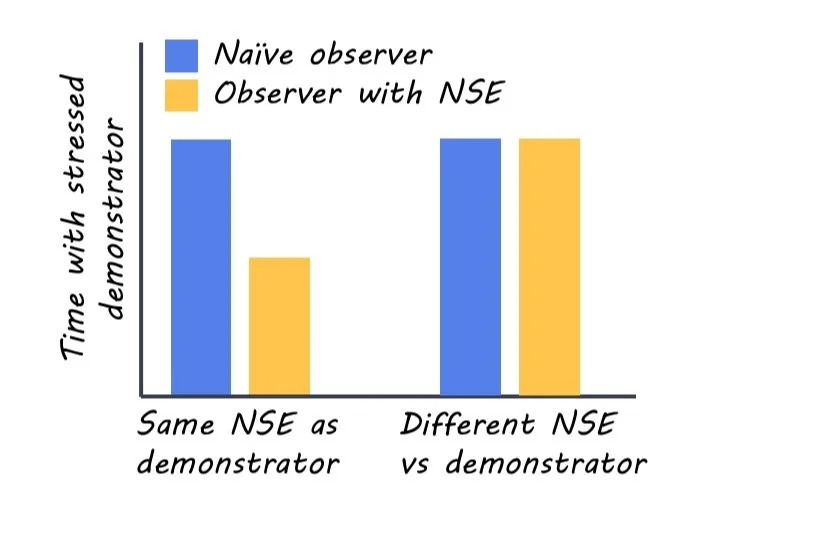The Role of Mitochondria in Age-Related Cognitive Decline
Post by Kelly Kadlec
The takeaway
This study investigated how mitochondria influence cognitive decline related to aging. In addition to illuminating the molecular link between synaptic excitation and mitochondrial gene transcription, the authors demonstrate how this molecular cascade could provide a basis for treatments to improve age-related cognitive decline.
What's the science?
A loss of energy as we age is a nearly universal experience, and a decline in cognitive function is seen as largely inevitable. It is thought that this change in the aging brain is related to changes in mitochondrial function, but the molecular underpinnings of this process have remained largely unknown. Understanding the relationship between neuronal activity and mitochondrial DNA transcription may provide key insights into the aging brain and how we might counteract functional decline by developing treatments that target this interaction. Last week in Science, Li and colleagues uncovered the molecular cascade linking synaptic excitation and mitochondrial DNA transcription and demonstrated that targeting this cascade can improve age-related cognitive decline in rodents.
How did they do it?
The authors investigated the molecular process of activity-dependent mitochondrial DNA transcription in mice using a broad range of in vivo and ex vivo techniques. First, the authors used RNAscope and optogenetics in hippocampal brain slices along with foot-shocks and quantitative real-time PCR in vivo to establish that neuronal activity interacts with mitochondrial transcription. Then, they compared this mitochondrial expression in young and aged mice. To better understand the cause of the age-related changes they observed, they again used optogenetic and pharmacological tools to isolate a critical role for activity-dependent calcium.
Next, they conducted immunogold electron microscopy in the hippocampus to determine whether or not this calcium dependency is regulated by calmodulin-dependent protein kinase II (CAMKII). The authors then sought to determine whether mitochondria can decode calcium activity through CRE-like sequences. They used a DNA-affinity assay to identify the presence of mitochondrial CREB and derived CREB activity sensors to directly probe its function.
Finally, the authors used whole-cell recordings, intracellular ATP measurements, and a variety of genetic techniques to measure and modulate neuronal activity. They examined the role that activity-coupled mitochondrial transcription plays in synaptic function and regulation. They tested these findings under the hypothesis of age-related changes by investigating how inhibiting or enhancing activity-dependent mitochondrial transcription impacts association-based learning in mice of different ages.
What did they find?
The authors first show a causal coupling between neuronal and synaptic excitation and mitochondrial DNA transcription. This expression was reduced in aged mice compared to young mice and was also associated with lower levels of activity-dependent mitochondrial calcium. The authors subsequently found that activity-coupled mitochondrial transcription relies on mitochondrial calcium.
The authors also probed the mechanisms that link neural activity with mitochondrial transcription and found that this process recruits the same molecules that have an established role in activity-transcription coupling in the nucleus. Specifically, activity-dependent mitochondrial transcription and calcium were regulated by CaMKII. Moreover, the translation from activity-dependent calcium to DNA transcription is mediated by mitochondrial CREB.
The authors also show how activity-coupled mitochondrial transcription regulates both synaptic and mitochondrial resilience, further demonstrating how this molecular process mediates both neuronal energy reserves and memory processes. Finally, they show that restoring activity-dependent mitochondrial transcription in aged mice enhances memory, suggesting a mitigation of age-related cognitive decline.
What's the impact?
Activity-dependent mitochondrial DNA transcription has long been suspected to play a critical role in maintaining neural energy reserves, and this study provides key insight into the molecular cascade underlying this process. The authors also show age-related alterations in this pathway that likely contribute to cognitive decline during aging. The authors also demonstrate that reinvigorating this pathway may reduce or even reverse age-related decline in brain function.



